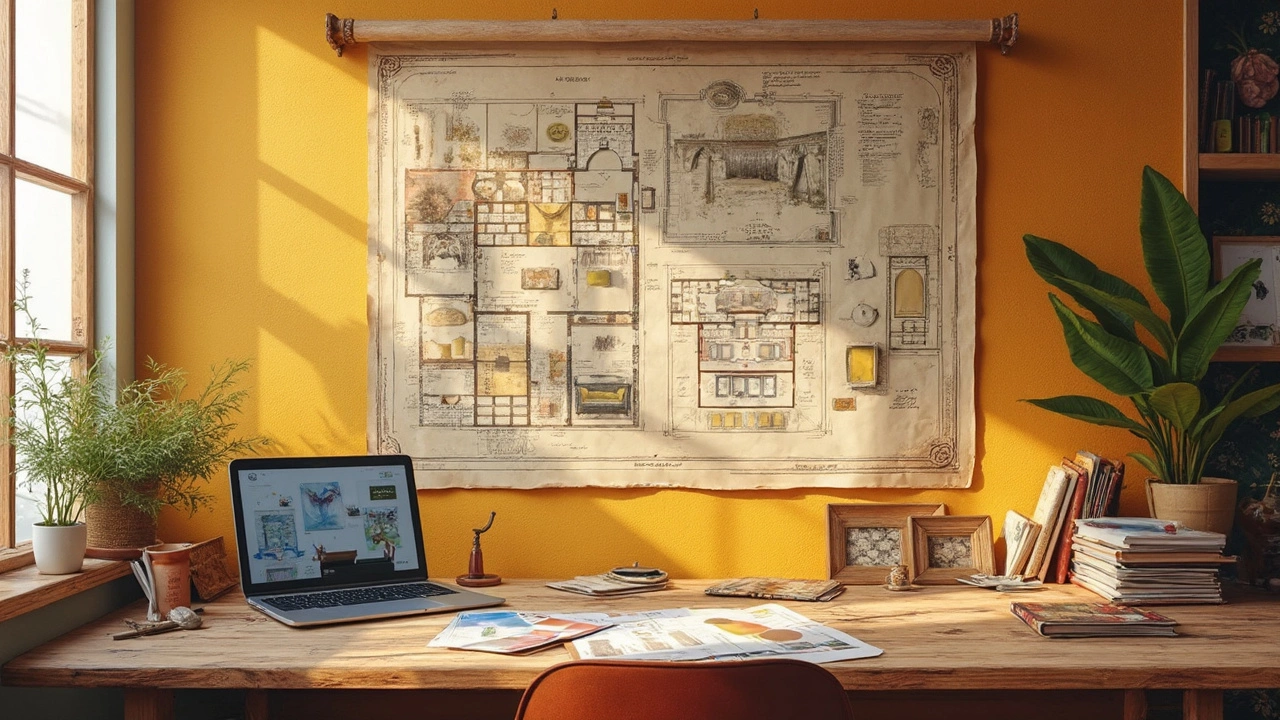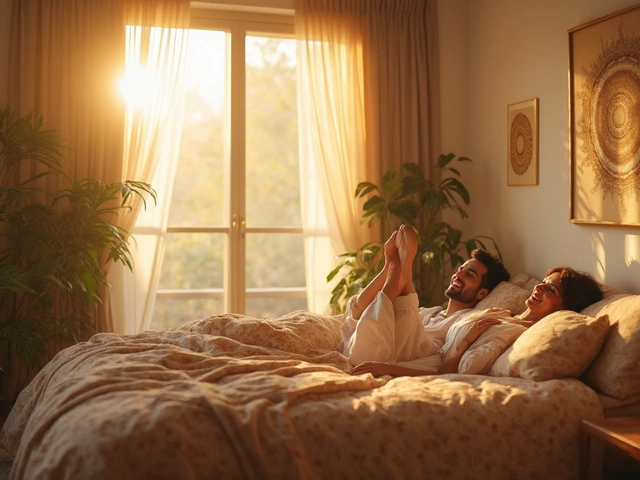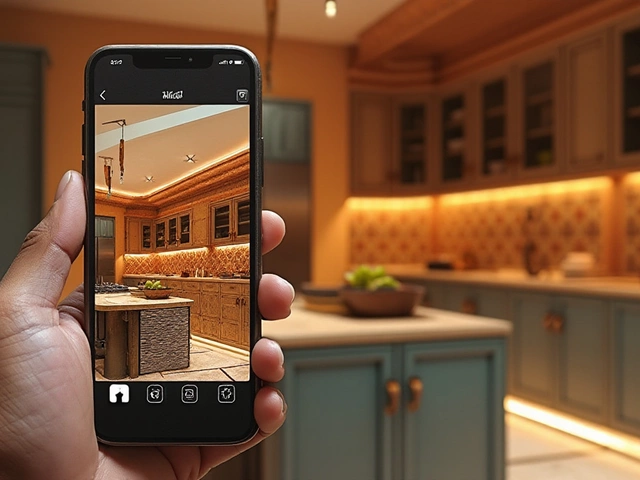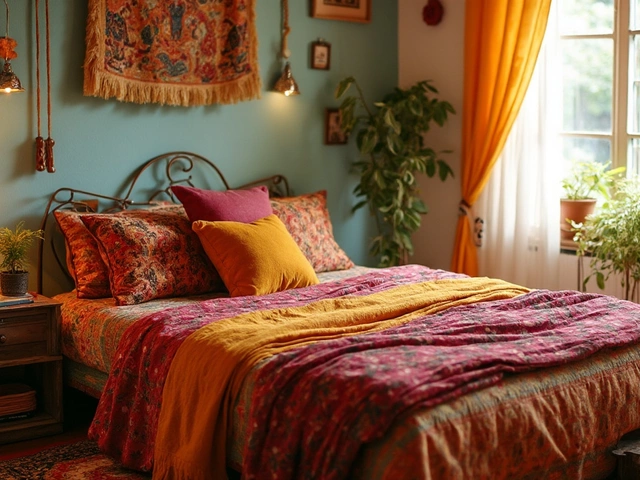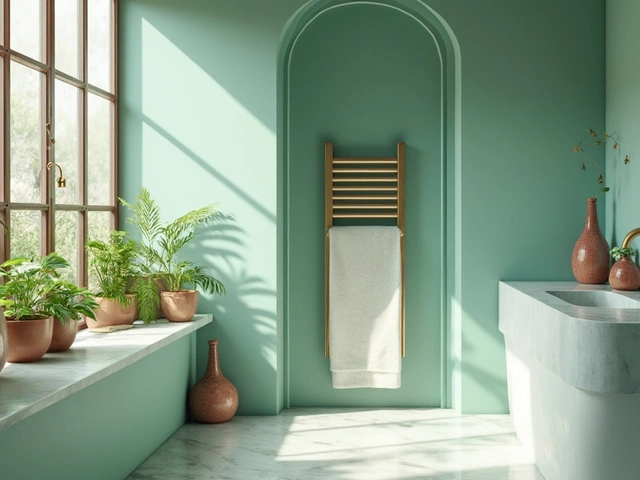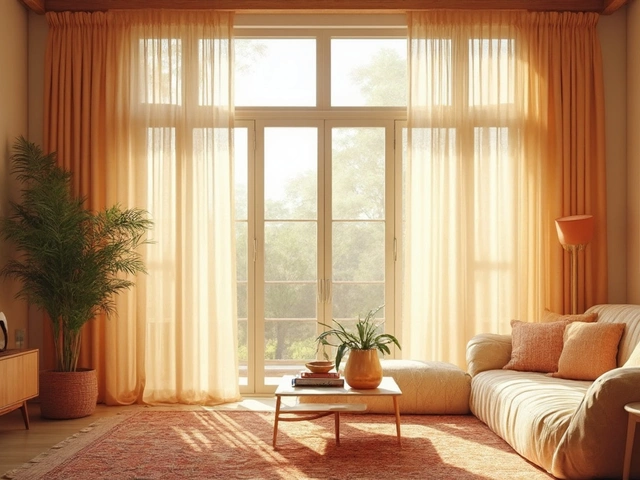Ever wonder what the paycheck of an interior designer looks like in the US? Well, it's pretty varied – just like the designs they create. The pay isn't just pulled out of a hat, though. Whether you're just curious or planning a career move, knowing what influences these numbers can be super helpful.
To kick things off, let's talk numbers. The average salary for interior designers across the States sits around $57,000 a year. But don't hold your breath—this figure is like a jumping-off point. Dive deeper, and you’ll find that the range is quite broad, stretching from $40,000 to upwards of $80,000 annually. So, what's behind these differences? The answer reads like a list of "what's what" in the job world: experience, location, and specialization, among others.
Knowing your worth is crucial, especially if you're starting or thinking about a change. If you’re an experienced designer in big cities like New York or LA, you might see a marked bump in income compared to someone fresh on the scene in a smaller town. Experience not only brings familiarity with trends and client needs but also means more hefty projects, potentially leading to better pay.
- Understanding Salary Averages
- Impact of Experience on Earnings
- Location, Location, Location
- Specialization Areas
- Maximizing Your Earnings
- Prospects and Trends
Understanding Salary Averages
So, how much do interior designers make in the USA on average? Let's do a deep dive into the numbers. The average annual salary lands around $57,000, but like with many professions, there's more beneath the surface. Factors such as industry demand, economy health, and design trends can sway these figures.
Base Salary and Variations
Your basic paycheck can start at about $40,000, but with experience and expertise, it could soar well over $80,000. This leap is no small deal. Early-career designers typically earn closer to the lower end, while those who've navigated years of the industry might laugh all the way to the bank with salaries on the higher end.
Median Salaries Across States
| State | Average Salary |
|---|---|
| California | $70,000 |
| Texas | $55,000 |
| New York | $75,000 |
| Florida | $50,000 |
Take a look at this table, where you can see how the interior designer salary can sway just based on geography. Big cities and states with a higher cost of living tend to offer higher salaries to match. Plus, states like New York and California have vibrant design scenes, so it makes sense that salaries there are on the higher side.
Industry-Specific Trends
While residential design is everywhere, some niches like commercial or sustainable design could bump your salary. As industries evolve and become more specialized, so do opportunities for designers to carve out higher-ranked roles that come with heftier paychecks. Keeping an eye on industry trends and innovations can not only boost your creativity but also your income.
For anyone looking to hop into the interior design scene or make a bold career move within it, having a solid grasp of these salary averages and their influencing factors is key. Being informed means you can better map out your career path and perhaps even negotiate a better pay package.
Impact of Experience on Earnings
Experience is like the secret spice in the salary recipe for interior designers. Whether you're a newbie or a seasoned pro, how long you've been in the game can make a noticeable difference in what ends up in your wallet.
Entry-Level: Testing the Waters
Newcomers often start with entry-level positions where the pay tends to hover around $40,000 to $45,000 a year. These roles are all about getting your feet wet—learning the ropes, and maybe making a few rookie mistakes along the way. But hey, that's where everyone starts, right?
Mid-Level: Proving Your Worth
Give it around 3 to 5 years, and you'll likely find yourself in the mid-level range where the salary bumps up to somewhere between $55,000 and $65,000 annually. By then, you've honed your skills, built a solid portfolio, and you’re able to tackle more complex projects. It’s all about proving your worth and maybe leading a team or two.
Senior-Level: Master of the Craft
Once you've been around for over a decade, you'll hit senior status with salaries that can stretch from $70,000 to $80,000 or more. At this point, you're not just any designer—you’re the go-to pro with a reputation. You might also steer entire departments or establish your own firm. Here, experience isn’t just years on a resume; it’s expertise clients are willing to pay extra for.
| Experience Level | Estimated Salary Range |
|---|---|
| Entry-Level | $40,000 - $45,000 |
| Mid-Level | $55,000 - $65,000 |
| Senior-Level | $70,000 - $80,000+ |
In short, more experience usually opens the door to more lucrative opportunities. So, whether you’re just starting out or are a seasoned veteran, it pays to stay committed and keep pushing your design limits. And remember, no confused client ever doubted a designer's experience when they saw results, right?
Location, Location, Location
Where you plant your roots can make a real difference in your interior designer salary. It's not just about the big city lights, but there's truth to the saying that more populated areas often come with bigger paychecks. If you're setting up shop in say, New York City or San Francisco, you can expect your earnings to trend higher than someone in smaller towns.
Why's that, you ask? Well, larger cities naturally mean a bigger clientele and more diverse project opportunities. Plus, there's a higher cost of living, and salaries often adjust to match—but keep in mind, those adjustments might simply balance out the higher expenses.
Hotspots for Higher Paychecks
So where should an up-and-coming interior designer look to work for the best pay? Here's a quick look:
- New York City - A bustling metropolis where the average salary can soar above $70,000 a year.
- Los Angeles - Home of the stars and demand for glamour, with averages touching around $65,000 to $72,000.
- San Francisco - Where tech meets chic design, with similar figures to LA.
- Washington D.C. - Expect earnings close to $67,000, thanks to government contracts and affluent residents.
But don't discount those middle America cities just yet! Some places like Austin, TX, and Nashville, TN, are becoming magnet spots for new businesses and younger populations, potentially leading to more interior design opportunities.
Cost of Living vs. Earnings
It's one thing to earn a higher salary, but if all that goes into rent and expenses, what's the gain? Look for a balance where your earnings comfortably outpace living costs. Cities like Denver or Atlanta offer that sweet spot of decent salaries without the mega-expenses attached to more iconic urban centers.
So as you map out your career path, keep in mind that location isn’t just a matter of geography—it’s a core part of how much you can pull in as an interior designer in the USA.
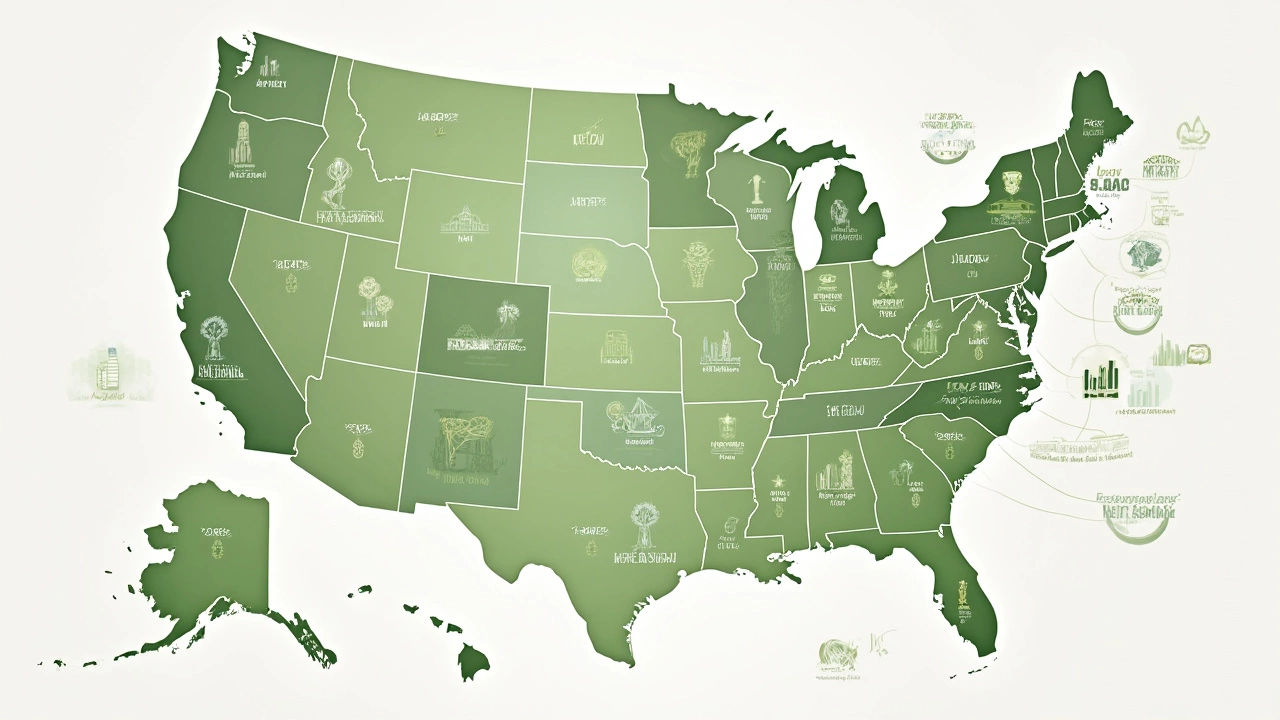
Specialization Areas
Alright, so you’re considering a career in interior design, or maybe you’re already in the game—either way, this part’s for you. When we talk interior designer salary, specialization can seriously pump up those numbers. Each area has its own quirks and pay scale.
Residential Design
If you have a soft spot for cozy homes and chic apartments, residential design might be your thing. Sure, it's super competitive, but there's always demand. People love their homes, and there’s good money in making them look awesome.
Commercial Design
Stepping into commercial design can mean working on hotels, restaurants, or corporate offices. These projects are often larger in scale, and so is the paycheck. USA cities are booming with new businesses, and each one wants a unique look—there’s your opportunity.
Sustainable or Green Design
Talk about a buzzword—sustainability is everywhere. More people, and companies, are willing to shell out extra for eco-friendly designs. When you're known for incorporating sustainability, you're not just saving the planet; you might be seeing an increase in your income.
Kitchen and Bath Design
It might sound niche, but it’s heating up. Think about it—everyone needs a functional kitchen and bathroom. This specialization combines style with practicality, pulling in clients looking to upgrade these vital spaces.
Set or Event Design
Got a flair for the dramatic? Set and event design could be right up your alley. From movie sets to lavish parties, this avenue lets you go all-out. It’s not every day, but when the gigs come, they can pay well—especially if you're highly rated.
Remember, each specialization path has its perks and pays. Find the one that matches your skills and interests, and you could see your income soar.
Maximizing Your Earnings
Alright, so you're an interior designer looking to pump up that paycheck. Where do you start? First off, focus on building a strong network. Connections can open doors to clients you wouldn't meet otherwise. Be it through social media platforms, design expos, or local workshops, make sure you're putting yourself out there.
Specialize to Stand Out
Think of specializing as your secret weapon. There's a reason specialists often earn more than generalists. Consider diving deep into a niche, whether it's sustainable design, commercial spaces, or luxury interiors. Homeowners love a designer who’s an expert in what they're after.
Continue Learning
The design world doesn't sit still. Trends change, new technologies arise, and staying on top of things makes you valuable. Consider courses in the latest design software or seminars on emerging trends. Knowledge not only helps in producing top-notch work but also gives you more confidence to charge what you're worth.
Your Portfolio is Key
A killer portfolio is like gold in this industry. Capture your best work meticulously. High-quality photos, clear descriptions, and client testimonials can make a potential client pick you over everyone else. Keep it updated and diverse, showcasing various styles and project types.
Negotiation Skills
Many designers leave money on the table simply because they don't ask. Be clear about your pricing from the start, feel confident to discuss budget options, and remember, it's okay to say no if the budget doesn't meet your needs. With practice, negotiating effectively will become second nature.
Extra Tips and Tricks
- Never underestimate the power of good marketing. Your online presence is your 24/7 billboard.
- Consider side offerings, like workshops or consultations, to diversify and increase income streams.
- Review regional trends. Are there particular styles or designs booming in your area that you can cater to?
Pumping up your salary as an interior designer takes initiative and a dash of creativity. By carving out your niche, honing your skills, and showcasing your best, you can definitely bump those earnings in no time.
| Tip | Impact |
|---|---|
| Networking | Increases client base |
| Specializing | Higher pay potential |
| Continuous Learning | Keeps you competitive |
Prospects and Trends
When we talk about the world of interior design, it's kind of like fashion. It’s always changing and evolving. So, what’s on the horizon for interior designers in the USA? Let's get into it.
First off, there's been a noticeable shift in emphasis towards sustainable and eco-friendly designs. Clients today are more conscious about their environmental footprint, and they're looking for spaces that reflect these values. This trend means that designers with knowledge in sustainable materials and practices might see more opportunities coming their way.
Another exciting trend is the advancement of technology. Virtual reality and 3D modeling are becoming tools of the trade, allowing designers to showcase their visions more vividly. If you're tech-savvy and willing to stay updated, incorporating these tools into your skillset can enhance your client presentations and potentially win more projects.
Interior designer salary growth can also relate to industry demand in specific sectors. For instance, with more people working remotely, home office design has seen a spike in demand. Designers specializing in creating productive and comfortable working environments at home could see a nice increase in their earnings.
The job market is expected to grow by about 5% over the next decade, which matches the average for most occupations. This growth is good news for aspiring designers, but remember, the field is competitive. Staying informed about trends and continuously growing your skills is key to getting ahead in this landscape.
Plus, location still matters. Urban areas tend to have more design opportunities and better pay than rural ones. However, with remote work, the ability to reach clients online has opened up more options for designers nationwide.
Being adaptable and innovative can boost your career prospects significantly. So, whether you’re just starting or you’ve been in the game for years, keeping an eye on what's trending and what's next can make a real difference in your success.
